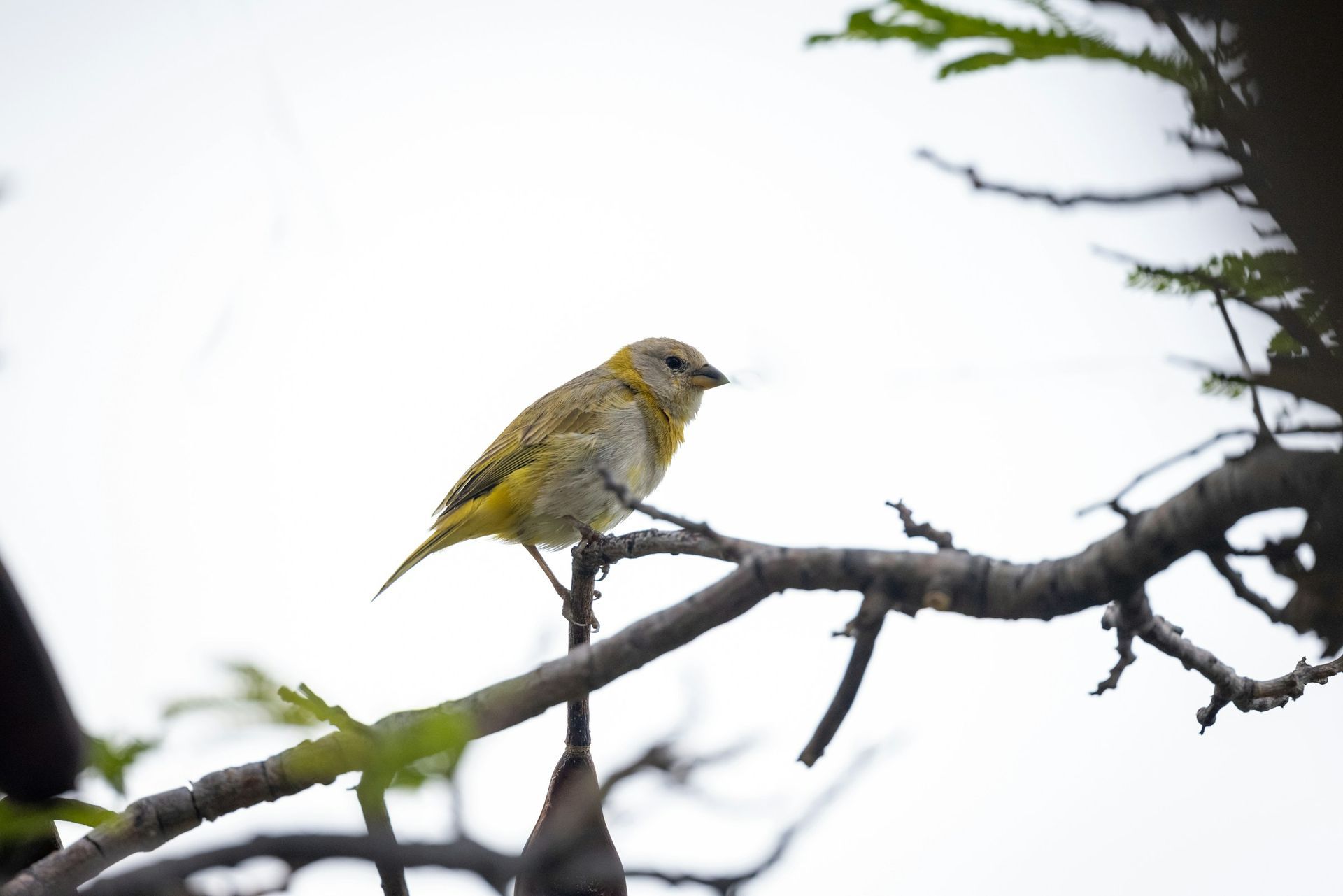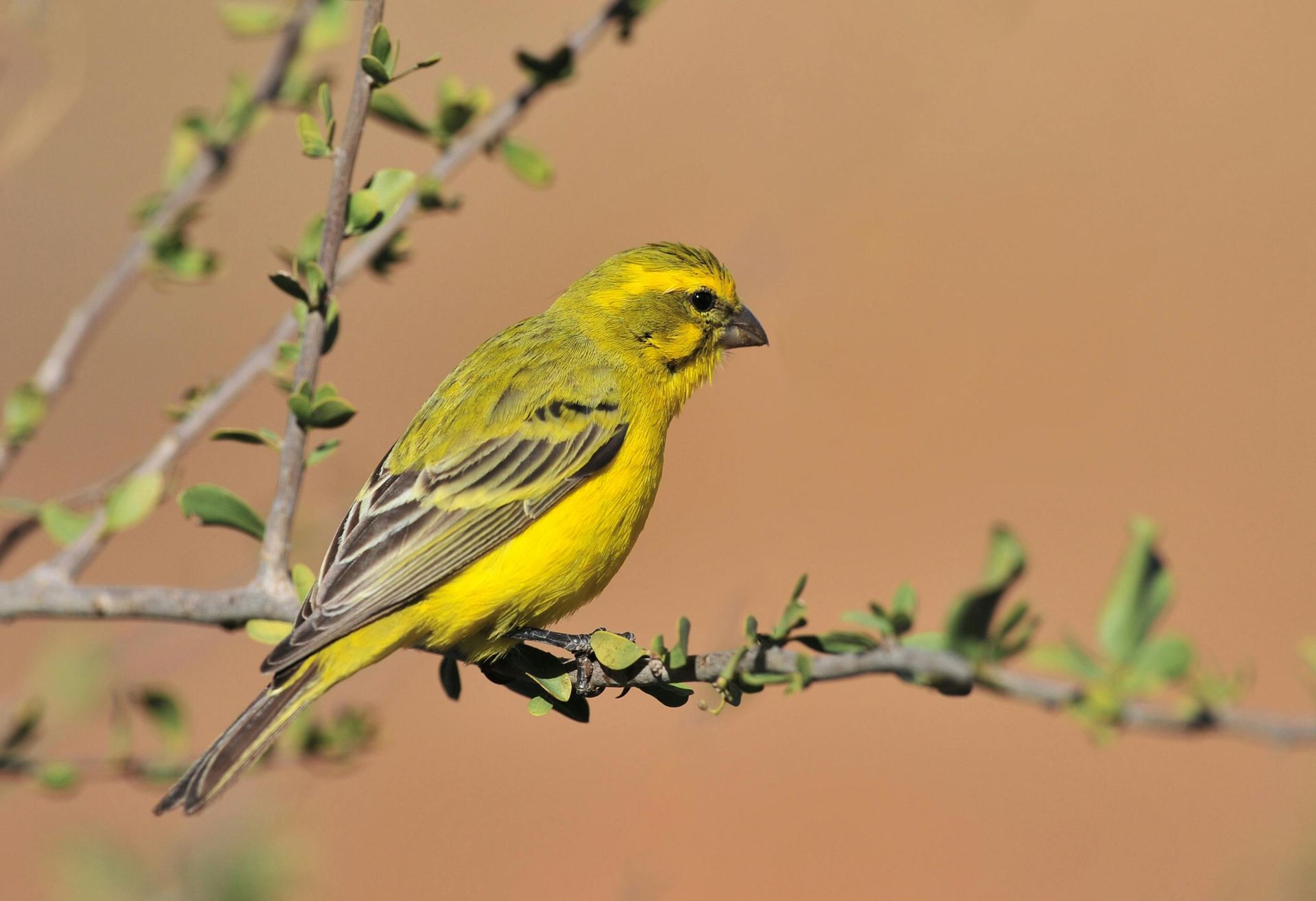Finches are small, colorful songbirds found throughout much of the world. Known for their vibrant plumage and melodious songs, they are a staple of both wild and suburban environments. Finches play an important ecological role as seed dispersers, helping maintain plant diversity in various ecosystems.
Most finches measure between 4-6 inches in length and exhibit a range of colors, from the striking yellow of the American Goldfinch to the deep red of the House Finch. Their conical beaks are specially adapted for cracking seeds, which make up the majority of their diet, though they also consume insects and fruits during the breeding season.
Finches are highly social and often form flocks outside the breeding season. During spring and summer, males sing to establish territory and attract mates. Nests are built in trees, shrubs, or man-made structures, and females lay 3-6 eggs per clutch. The young fledge after about two weeks but remain with their parents for additional feeding and guidance.
Predators of finches include hawks, snakes, and domestic cats. Human-related threats, such as habitat loss, pesticide use, and window collisions, can also impact their populations. Despite these challenges, finches are resilient and continue to thrive in diverse habitats.

For your safety and the well-being of wildlife, please observe animals from a distance and avoid touching or disturbing them. If you encounter an animal that appears injured or in distress, contact a licensed wildlife rescue organization for guidance before intervening.
Found An Animal? Not sure how to help a wild animal in need? Learn when to step in, who to call, and how to help safely.
Did You Know?
- The American Goldfinch molts twice a year, a rare trait among North American songbirds.
- House Finches were originally kept as cage birds before being released into the wild in the 1940s.
- The color of a finch’s plumage can be affected by its diet, especially in species like the House Finch.
- Finches often use spider silk to reinforce their nests, giving them extra flexibility and strength.
- Some species, such as the Purple Finch, are known for their mimicry of other bird calls.
- Darwin’s finches in the Galápagos Islands evolved distinct beak shapes to exploit different food sources.
- Finches can identify individual family members by their unique calls.
- During the winter months, finches form large flocks to forage for seeds.
- Lesser Goldfinches are one of the smallest members of the finch family, weighing less than half an ounce.
Problems Faced In The Wild
- Habitat Loss: Urban expansion and deforestation reduce nesting and foraging areas.
- Pesticide Use: Chemicals reduce insect populations and can poison birds indirectly.
- Window Collisions: Reflective glass poses a significant danger to migrating and foraging finches.
- Predation by Domestic Cats: Free-roaming cats are a major threat to finches and other small birds.
- Climate Change: Altered weather patterns impact food availability and breeding success.
- Competition for Resources: Invasive bird species can displace native finches from prime habitats.
Tips For Cohabitation
- Provide Native Plants: Planting native trees and shrubs supports finch foraging and nesting.
- Avoid Pesticides: Use eco-friendly pest control methods to protect insect populations.
- Install Window Decals: Reduce window strikes by making glass more visible to birds.
- Offer Bird Feeders with Seeds: Provide appropriate food sources, such as sunflower and thistle seeds.
- Keep Cats Indoors: Protect finches and other wildlife by keeping domestic cats inside.
- Preserve Natural Spaces: Maintain hedgerows and wooded areas to provide habitat for finches.



